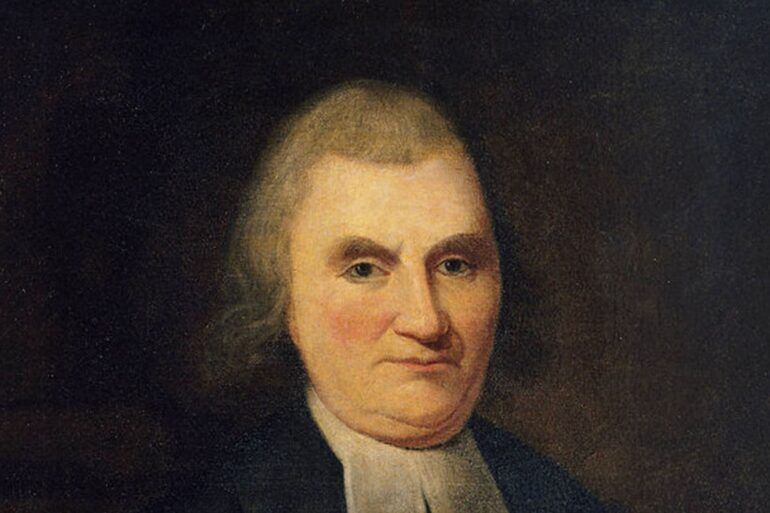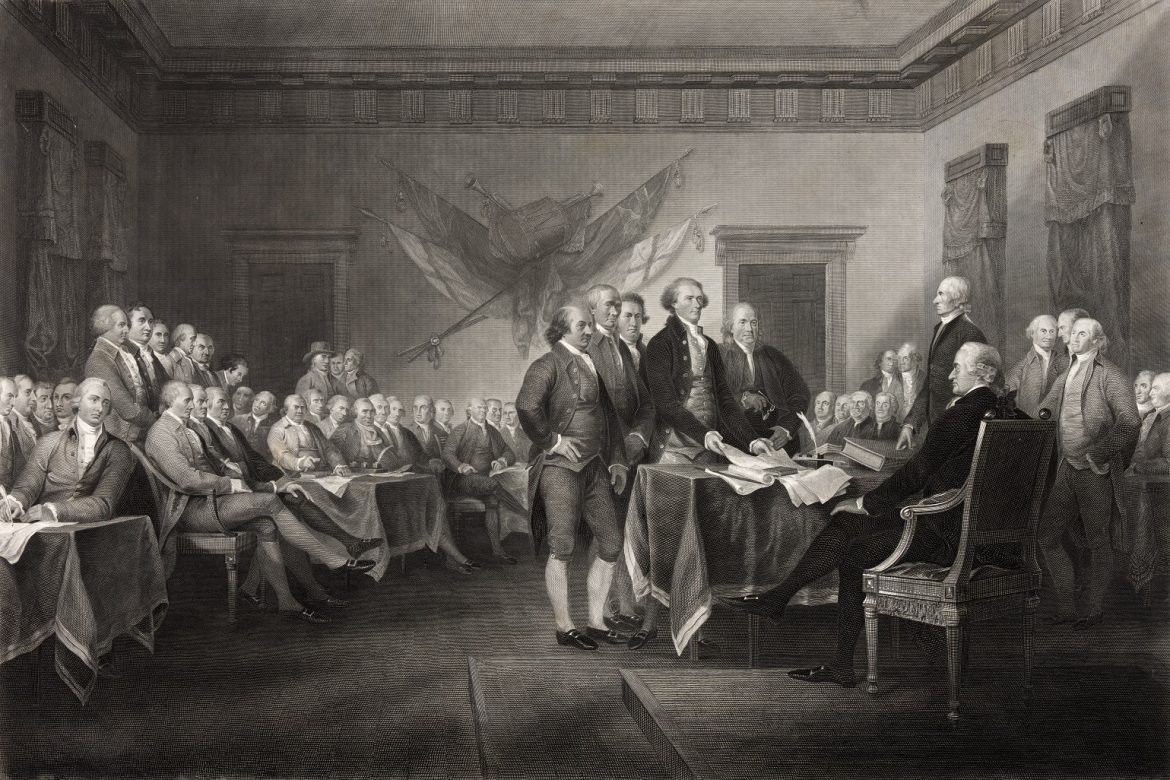Born on 5 February 1723 in Gifford, East Lothian, John Witherspoon was the son of Reverend James Witherspoon and his wife Anne Walker.
He was educated at Haddington Grammar School and then followed his father in church ministry. He was ordained as a Church of Scotland minister in 1745. His first parish was in Beith and he stayed there until 1757. At this time, he married Elizabeth Montgomery and over the course of their marriage they had ten children.
In 1757 John Witherspoon became the minister for the Laigh Kirk in Paisley, what is now the Paisley Arts Centre. His style and demeanour can be described as doctrinarian, opposed to any moderation of Calvinist church teachings. An unfortunate event occurred during his ministry which ended with John Witherspoon being sued for libel by a group of young parishioners. It began in 1762 when Witherspoon accused a group of wealthy young men of mocking and defaming the church and its teachings. Initially the claims where upheld but after some investigation the young men were cleared of any wrongdoing and they in turn sued being awarded the sum of £292 to be paid by John Witherspoon.
When in 1766 he was invited to take up the post of president of Princeton University in New Jersey after some consideration John and his wife left Paisley for the new post. The couple and family left on the eleven-week voyage to America onboard the ship “Peggy” leaving Greenock on 18 May 1768.
Over the following years Witherspoon reorganised the University and under his leadership Princeton gained a status and reputation for excellence which saw the institution grow in influence. During these years, the relationship between Britain and their colony of America grew more strained and a war of independence was inevitable. Witherspoon gave his full support to America.
In 1774 he published “Thoughts on American Liberty” and two years later he entered politics as the Republican representative for New Jersey at the continental congress which met in Philadelphia that year. On the fourth of July 1776 John Witherspoon was one of the signatories of the Declaration of Independence a seminal point in the history of the USA.
In his personal life Witherspoon was widowed with the death of his wife and several of their children who did not live into adulthood. In 1780 at the age of sixty-eight John Witherspoon married again to twenty-four-year-old Ann Dill. John Witherspoon had a further two children in this marriage.
Whilst appearing to support the anti-slavery agenda during his time in Scotland, John Witherspoon would go on to own several slaves on his New Jersey farm and used his position in government to oppose taxation of slaves, comparing them to horses. He would go on to oversee a committee to abolish slavery in the state of New Jersey. However, his committee decided not to abolish slavery, as they believed “slavery as an institution would not be in existence for long”. It would be another 75 years before it was abolished in America. In one of his lessons on morality at the College, Witherspoon stated that while slavery was “unlawful,” he did not see the “necessity… to make them free to their own ruin.”
John Witherspoon continued to serve in congress until 1784. In later life his health deteriorated and in 1792 his eyesight failed, and he went blind. He died on 15 November 1794, and he is buried in Princeton.
A statue of John Witherspoon is situated in Paisley at the main entrance of the University of the West of Scotland.

